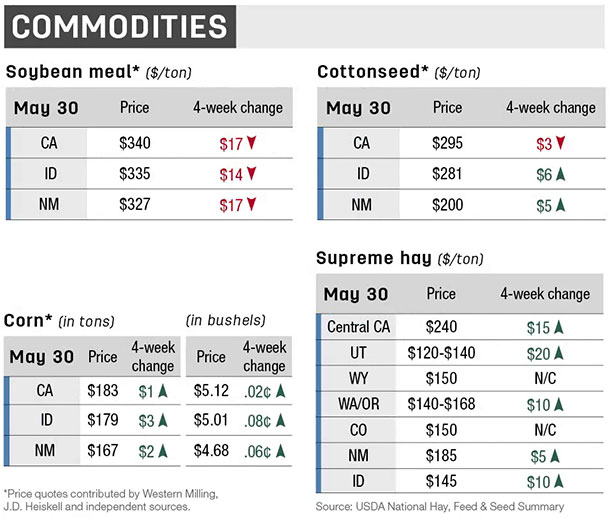The grazing season is in full swing, and cattle grazing on Western rangelands can be unevenly distributed due to large pasture size, variation in forage availability and limited access to water. This can lead to poor forage use efficiency, lower animal production and declining range health in overgrazed areas. Improving cattle distribution could increase both financial and resource efficiency on grazing operations. Since grazing management is so critical to our bottom line, here are a couple of considerations to help set us up for success.
1. Consider modifying grazing behavior: Strategic placement of supplement (i.e., salt, mineral and protein) has been proven an inexpensive method to manipulate cattle grazing distribution. Protein blocks are typically most effective in attracting cattle to a new area.
Introduce supplements to a new area by incrementally moving it away (i.e., 400 yards) from the previous location. Consider moving cattle to a new area using low-stress techniques. The use of supplements has limitations. For example, protein blocks will not be as effective if forage (availability and quality) is sufficiently meeting nutritional requirements.
2. Consider improving pasture features: Providing greater control across an extensive landscape is key to maximizing grazing distribution. Temporary fence is a fast and effective way to decrease pasture size and increase stock density, allowing for greater control. It can be cost-effective in some situations.

Create smaller, new pastures similar in landscape and forage type. Water placement is the most important influence. Forage utilization declines rapidly beyond a certain distance from water. There are a number of ways to increase water locations (i.e., stock ponds, wells, hauling, etc.). Watering points should be no more than 0.5 to 1.5 miles apart.
3. Consider grazing management strategies: Rotation through smaller pastures with greater stock density can decrease grazing periods and increase recovery time. Additionally, season of use influences grazing distribution. Early season grazing improves distribution due to lower temperatures and a higher plane of nutrition.
Grazing during the fall and winter, when forage quality is low, can also lead to more uniform distribution. In both situations, changing the season of grazing use can result in cattle less focused on areas that would normally be overgrazed.
The need for a detailed cost-benefit analysis before implementation is the common link among each consideration. Improving grazing distribution requires greater management. However, healthier pastures lead to increased productivity and profitability.







